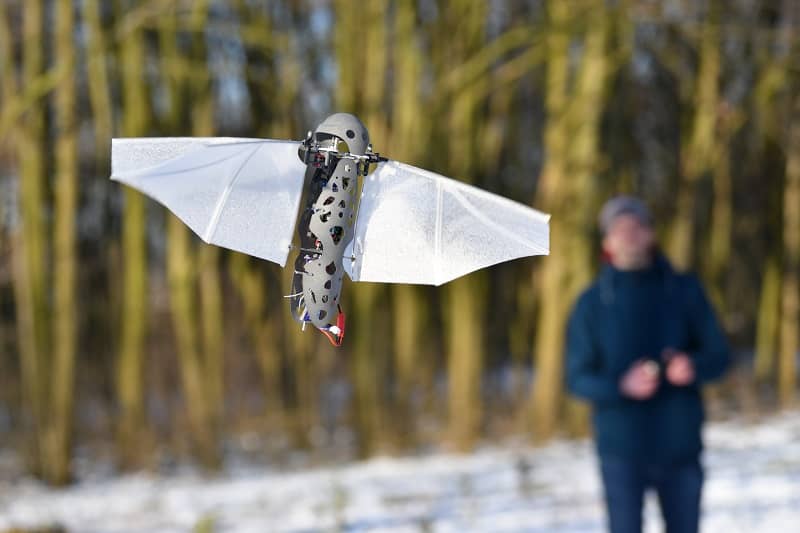 Flapper Drones
Flapper Drones
Flapper Drones are bioinspired flying robots which fly by flapping their wings, similar to hummingbirds or winged insects. While most drones fly with the help of propellors, Flappers fly by flapping their wings, just like hummingbirds or insects. They can hover and fly in any direction, but are safe thanks to being lightweight and relying on soft wings, with inherent collision-tolerance as the wing bounce off obstacles.
We believe it is important to create experiences that liberate us from the digital world which mostly confined life to circle around screens. Nature allows us to lose ourselves in the elegance and mystery surrounding it. We sought inspiration from birds and dragonflies, to design our drone that provides a new source of fun, learning and excitement in a safe and less intrusive way.
Bioinspiration helps create technology with better function and often leads to beautiful designs, which blend much better with our environments. Flapper Drones combines nature and technology in a new type of drone specifically meant for art, entertainment and research.
During Highlight Delft the Flappers are operated autonomously inside an arena equipped with an IR-laser-based positioning system, the “Lighthouse”. The visitors will be able to control the Flapper’s position.
 Flapper Drones
Flapper Drones
Flapper Drones are bioinspired flying robots which fly by flapping their wings, similar to hummingbirds or winged insects.
About Matěj Karásek
Matěj Karásek is a Czech-based scientist and inventor. He spent 10 years in the academia at ULB (Belgium) and TU Delft (Netherlands) researching animal flight and developing bioinspired flying robots. In 2019, he founded Flapper Drones, a startup company producing bird- and insect-like robots used as development platforms in research and entertainment applications. Matěj Karásek holds an MSc in mechanical engineering (CTU in Prague) and PhD in engineering sciences (ULB Brussels).

Thanks to
Thanks to Flapper s.r.o. and our research collaboration with MAVLab TU Delft
